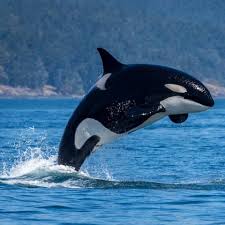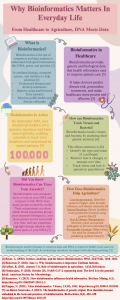Orcas, also known as killer whales, are the largest among the dolphin family. They are intelligent predators, feasting among marine mammals such as seals, sea lions, and even whales. With the assistance of razor sharp teeth and a superior intelligence, the orcas hunt in deadly pods. In family groups of up to forty, the whales use effective cooperative hunting techniques that model those of a wolf pack. Although they are fierce predators, the only danger these powerful creatures pose to humans seems to be when they are used for human entertainment and placed into captivity. In captivity, there have been over 100 incidents between human and whale, and a total of four deaths, while in the wild, no deaths have ever been recorded. Additionally, captivity causes damaging mental and physical effects on these magnificent creatures.1
On the morning of November 18, 1961, the first orca was captured in Newport Harbor, California. Millions watched as chaos consumed the harbor. Fishermen from Marineland of the Pacific scrambled to capture the distressed whale, and finally after many failed attempts, succeeded in capturing the animal. After being plucked from her natural home, Wanda was placed into a 100 by 50 by 19-foot oval tank. Immediately, she began to run into walls and swim restlessly in her new unnatural environment. Less than two days following her capture Wanda was found dead in her jail cell of a tank. Many biologists believe her death was a suicide. After reaching great speeds, she would strike her body against the walls until the last breath left her body and she was free from human confinement.2
This behavior of self-harm is not a natural behavior associated with orcas; however, it is very common among whales in captivity. Many captive orcas inflict pain upon themselves because they are bored and frustrated with their environment. One of the most common ways of inflicting self-harm is through dental destruction. Whales in captivity often chew on mental enclosures, causing extreme pain and damage to their teeth. Captive orcas often exhibit broken and worn teeth with exposed gums. This largely contrasts with orcas in the wild, who show little to no tooth wear.3
The extreme tooth damage leads to many other health issues that orcas in captivity regularly face. Due to the exposed gums, infectious diseases have a direct entry to the bloodstream and can reach vital organs such as the kidneys and heart. Heart disease and pneumonia are common diseases that are contracted via the tooth canals. Veterinarians routinely drill and work to combat these dental issues, yet little literature has been published by these medical experts on the topic. International researchers examined 29 captive orcas, all of which suffered from dental damage. They later learned that over 50% of them had undergone the painful modified pulpotomy procedure. This lack of veterinary transparency contradicts their claims that promote education and conservation for these wild animals.4
Another negative physical trend seen in captive orcas is the collapsed dorsal fins. Recreational parks such as Sea World depict orcas with healthy, natural looking dorsal fins; however, this is not a true representation of the orcas within the park walls. All captive adult male orcas suffer from collapsed dorsal fins, which is likely caused by the lack of space they have within their enclosures. It is said that less than 1 percent of orcas suffer from dorsal fin collapse in the wild. These statistics, looked at side by side, further the popular claim that captivity is detrimental to orcas.5

Being such social creatures, orcas travel in large groups called pods. They are acoustically oriented, using clicks, whistles, and echolocation to navigate their surroundings and communicate with one another. However, when in captivity there is no opportunity for them to take advantage of this natural behavior. Different whales from different pods use different types of clicks and sounds to communicate. Therefore, when whales from different parts of the world are thrown together in tanks, they are unable to communicate and often turn violent towards one another.6
The only recorded fatal attack by one orca on another occurred in captivity. Just as personalities clash, orcas can be incompatible with other orcas. Because orcas in confinement cannot choose their companions, we often see more dominant whales bullying the younger small whales in the enclosures. The lack of communication also adds to many of the issues among orcas in captivity. In severe cases, this dangerous behavior can lead to deep wounds and lacerations resulting in the animals having to be separated. This separation furthers the isolation these whales in captivity must face on a day to day basis. In the wild, aggression has been rarely observed, as the ocean is a huge habitat allowing the subordinate animal room to escape any aggression that may be present.7

However, the aggression exhibited by captive orcas is not only limited to other orcas, but to humans as well. While there have been no reported fatal attacks in the wild, hundreds of incidents have been recorded involving orcas in captivity. Perhaps the most famous incident was the death of veteran trainer Dawn Brancheau after being attacked by the infamous Tilikum. This incident showed that no matter the experience of trainers, these animals will always be in control. Former Sea World trainer Jeffrey Ventre explained how Tilikum “knew exactly what he was doing” when he killed the experienced trainer. Many trainers believed Tilikum’s troubled past is what led to his aggressive behavior.8
In 1983, near Iceland, 2-year-old Tilikum was torn away from his mother and ocean home. Taken to rundown marine park Sealand of the Pacific, Tilikum was forced into very unnatural conditions. Food was withheld from him and he often endured attacks from the two dominant females in the park. He was forced to perform eight shows a day, seven days a week. For Tilikum, being such a highly intelligent, emotional, and socially complex animal, captivity was devastating physically and mentally early on in his life. After much frustration, Tilikum acted out again, and killed trainer Keltie Byrne. In all, Tilikum was involved in the deaths of three different trainers. The staggering difference between the number of fatal attacks in the wild compared to those of this one whale show the dangerous effects captivity has on these ocean giants. Not only is captivity dangerous for these creatures, but also for those who are in charge of their so called well-being.9
Many often argue that whales in captivity are pivotal for research and breeding programs. However, the positives don’t outweigh the negatives when it comes to orcas and captivity. Whales in captivity are often impregnated at a young age. A Sea World orca was pregnant and gave birth at the young age of eight. There is also a lot of controversy surrounding Tilikum and his twenty-one offspring. Many believe, given his infamous violent behavior, that his genetics should not be passed down to other orcas intended for captivity and human entertainment.10
Orcas also are cared for by their mothers up until about two years. After this, they become part of the pod and travel with their native group. In a study of almost 600 orcas, data show that having a mom nearby significantly increased the survival rate of the calf. It was also found that female killer whales have strong motherly instincts and an urge to care for their young. In captivity, we often see calves being taken from their mothers at very young ages. This separation at such a young age can cause depression for the calves and mothers. John Hargrove, a former senior killer whale trainer at Sea World described his first-hand account of the separation of a mother and calf: “In fact, [when Takara was taken from Kasatka], she was emitting vocalizations that had never been heard before ever by anyone … obviously Takara was gone and [Kasatka] was trying anything she could to try to locate and communicate with Takara, which is absolutely heartbreaking.” 11 Hargrove alone can recall nineteen instances where a mother and a calf were separated. Seventeen were for management purposes while only two were for medical reasons. Separating a mother from her young is a traumatic experience that never happens in the wild.12

Leading orca researchers agree that captivity is devastating to these marine mammals, who in the wild, engage in tight knit relationships with one another, travel over 100 miles daily, and work in pods to hunt and find food suited for their large diets. Many orcas have been captured and forced into captivity, which has denied them the opportunity to engage in their natural genetic behaviors. The constant factors that push them to be everything that they’re not causes them stress, anxiety, and depression that is not seen in wild orcas. These unnatural feelings cause them to exhibit unnatural behaviors never seen in the wild, such as extreme tooth damage from gnawing on cages, floating lifelessly in pools, and in some cases extreme aggression towards other orcas and humans.13
The limited dangers orcas face in the wild are often brought on by human activities such as overfishing and boating accidents. However, despite these dangers, orcas in the wild live more purposeful and meaningful lives, where they are free to live life as it comes; on its most natural course.14
- “The Fate of Captive Orcas,” WDC, Whale and Dolphin Conservation. Accessed November 05, 2018. https://us.whales.org/wdc-in-action/fate-of-captive-orcas. ↵
- “The Fate of Captive Orcas,” WDC, Whale and Dolphin Conservation. Accessed November 05, 2018. https://us.whales.org/wdc-in-action/fate-of-captive-orcas. ↵
- Sam Lipman, “The Orca of Marineland Antibes.” Orca Aware, (1970), http://bdmlr-orcaaware.blogspot.com/2016/04/the-orca-of-marineland-antibes.html. ↵
- Emma Foster et al., “Adaptive Prolonged Postreproductive Life Span in Killer Whales,” American Association for the Advancement of Science, (2014), science.sciencemag.org/content/337/6100/1313. ↵
- Cara Meyers, “SeaWorld’s Lies Sink To New Low,” Digital Journal,(2014);1-3. http://www.digitaljournal.com/news/environment/seaworld-put-on-notice-by-orca-scientist/article/384814#ixzz32wcTf3Qh. ↵
- Andre Chwalibog, “Orcas are Social Mammals,” MedCrave, (2018); 22-24. https://medcraveonline.com/IJAWB/IJAWB-03-00101. ↵
- Andre Chalibog, “Orcas are Social Mammals,” MedCrave, (2018); 22-24. https://medcraveonline.com/IJAWB/IJAWB-03-00101. ↵
- Caitlyn Burford and Julie Kalil Schutten, “Internatural Activists and the ‘Blackfish Effect’: Contemplating Captive Orcas’ Protest Rhetoric through a Coherence Frame,” Frontiers (2016), www.frontiersin.org/articles/10.3389/fcomm.2016.00016/full. ↵
- Caitlyn Burford and Julie Kalil Schutten, “Internatural Activists and the ‘Blackfish Effect’: Contemplating Captive Orcas’ Protest Rhetoric through a Coherence Frame,” Frontiers (2016), www.frontiersin.org/articles/10.3389/fcomm.2016.00016/full. ↵
- Melissa Cronin, “5 Reasons Why SeaWorld’s Orca Breeding Program Is Seriously Bad News,” Thedodo (2014), https://www.thedodo.com/5-reasons-why-seaworlds-orca-b-531056663.html. ↵
- “Former Orca Trainer For SeaWorld Condemns Its Practices,” (2015), https://www.npr.org/2015/03/23/394730076/former-orca-trainer-for-seaworld-condemns-its-practices. ↵
- Melissa Cornin, “5 Reasons Why SeaWorld’s Orca Breeding Program Is Seriously Bad News,” Thedodo (2014), https://www.thedodo.com/5-reasons-why-seaworlds-orca-b-531056663.html. ↵
- Vanessa Williams, “Dying to Entertain You,” WDCS, (2001); 3-5. http://www.wdcs.org/submissions_bin/orcareport.pdf. ↵
- Vanessa Williams, “Dying to Entertain You,” WDCS, (2001); 3-5. http://www.wdcs.org/submissions_bin/orcareport.pdf. ↵



107 comments
Emilia Caballero Carmona
Hey Riley, you article was so interesting to read because I’m personally really interested in marine animals, so reading and learning about Orcas was very cool to me. I had heard on the news that some years ago there was an accident with an Orca at a SeaWorld park, in Florida I think and it is so cruel to see animals confined in these tanks. Wanda was a clear example that animals are not meant to be confined away from their natural habitat, but humans have turned a blind eye on this issue.
Janie Cheverie
This article is very interesting and gave perspective to the fact that animals are not meant to live in captivity. They are intended to live in their natural ecosystems where they have plenty of room to swim freely versus the environment in places like Sea World. Particularly big and social animals like orcas should not be kept in tanks alone because they need social interactions with other whales. This article did a great job of explaining how poor the quality of life of orcas living in captivity is compared to being in the wild where they live with more purpose and meaning.
Tyler Dick
Tili was such a marvelous creature who deserved better. The evolution of these intellectual orcas surpasses concrete barriers. Best article ever!
Lesley Martinez
This is such an interesting article. It’s shocking to read that having orcas in captivity causes them to inflict self-harm through dental destruction and leads to heart disease and pneumonia. Wanda’s story is heartbreaking and the fact that she felt suicide, as biologists believe, was her only way to cope with a new environment is outrageous. I wonder why orcas continue to be used as display mammals after multiple human tragedies have occurred. This article raises awareness of the consequences of captivating whales and removing them from their natural habitats. Great article!
Destiny Lucero
This article brings awareness to captured Orcas and their lack in quality of life. It is heartbreaking when you realize how intelligent and emotional these creatures are, closely related to human emotions. It is unethical for the treatment of taking a baby from it’s mother then forcing it into isolation. But for these mammals, it is morally debatable and people willingly pay money for the entertainment of them. They face mental illness when forced to live in captivity which leads to self harm, harm to others, or even suicide.
Raul Colunga
It is tragic to hear what water parks are doing to their killer whales. It was interesting to read that whales have different clicks and only whales in their pods would understand. Also that they are very social animals and leaving one in a tank alone is heartbreaking. They also can swim for long distances and keeping them in a tank for years and only being able to swim in circles is sad to think about.
Mauro Bustamante
This article is very interesting and eye-opening showing that animals need to be allowed to live in their own ecosystems and society our people shouldn’t bother them because when their put in ecosystems that aren’t their own such as Sea World it makes it more difficult to for them to adjust to the environment and may cause them to be more not reliable or uncooperative to what we ask them to do. Orcas specifically they shouldn’t be kept in captivity just for human entertainment, they aren’t meant to be put in tight spaces and be train they are supposed to feel free in the ocean experiencing the sun.
Mark Dominguez
A very interesting and thought-provoking article. Prior to reading this article, I had heard of the controversy of orcas in captivity and the protest against Sea World for it but I never knew there was so much more to it. It’s sad to read the statistics and how the animals respond to being in captivity, I never knew that they would harm themselves while in captivity.
Michael Thompson
I feel like this article perfectly highlights the ways how it is wrong for whales to be in captivity. And that’s why my family never went to Sea world, or the circus, as my parents thought it was cruel to the animals involved. And so it’s a good thing that the circus doesn’t really exist anymore, just like Sea World is starting to realize that the killer whale captivity is wrong. It’s just another form of animal cruelty, for human entertainment. They are in pain and getting hurt, just like a dog would in a dog-fighting ring. So why is this ok and dog-fighting not? They both are bad, and need to stop.
Angelina Gonzalez
I had always assumed that places like Sea World and aquariums maintained their animals happiness. However, I now realize that this is not the case. Although I am sure these animals are not treated badly, animals still are not happy and need to be free. Animals should be respected and left alone in their habitats, and Orcas are just one example of what issues could come with captivating them.